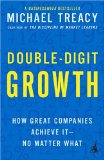Browse Executive Interviews
Subject wise
- 21st Century Organization
- Blue Ocean Strategy
- Bottom of the Pyramid
- Brands and Branding
- Building Ethical Organizations
- Building High Performance Teams
- Business Model Innovation
- Business Process Outsourcing ( BPO )
- Business Schools and Business Ethics

- Change Management
- Co-Creation
- Collaboration
- Competing for Customers
- Corporate Entrepreneurship
- Corporate Social Responsibility ( CSR )
- Customer Relationship Management ( CRM )
- Decision Making
- Emerging Markets
- Executive Development
- Family Business
- Global Economy and Global Managers
- Global Strategy
- Government and Business
- Indian IT Industry
- Innovation
- Knowledge Management
- Knowledge Process Outsourcing ( KPO )
- Leadership
- Learning Organizations
- Level 5 Leadership
- Managing Complexity
- Managing Downturn without Downsizing
- Managing Troubled Times
- Marketing in a Downturn
- Midlife Crisis
- Multicultural Teams
- Organizational Loyalty
- Private Labels
- Rebranding Strategies of Bank of Baroda
- Reverse Innovation
- Social Cause Marketing
- Social Entrepreneurship

- Social Networking

- Staying on Top, Always
- Steve Jobs
- Strategy Execution
- Talent Management
- The China Factor
- The Making of a CEO
- Virtual World
- Why Good Companies Go Bad
- Women Entrepreneurs
- Women Executives
Publishing Year
Publishing Year
Interview with Michael Treacy on InnovationNovember 2006 - By Dr. Nagendra V Chowdary |
|||||||||||||

Michael Treacy Since the 1990s, Michael Treacy has been regarded as one of the world's leading experts on corporate strategies for growth, and more recently has become noted for his ideas on the role of product innovation in growth strategies. He has co-authored one of the bestselling business books of the 1990s, The Discipline of Market Leaders. He published his most recent book, Double-Digit Growth, in September 2003. The book has appeared on the bestseller lists compiled by BusinessWeek and The Wall Street Journal.
innovate on. Developed in conjunction with client engagements, industry research and market trends, these views are providing insight for organizations that are challenged to achieve growth and competitive advantage. His research led to his codeveloping the G3: Innovation Discipline (G3:ID), which is the leading methodology for dramatically increasing the impact, speed, and productivity of new product development. His structured analysis and thought leadership has created a comprehensive methodology integrating his expertise and knowledge on Growth Strategies, Market Leadership Strategies and Management Disciplines. Treacy has also supported GEN3 Ventures, a fund dedicated to identifying and growing new companies based on technology and product breakthroughs. Prior to GEN3 Partners, Treacy built a strategy consulting firm, Treacy & Co., which served companies in telecommunications, industrial products, financial services, transportation and retailing. He has also worked with one of the fastestgrowing consulting firms of the 1990s, CSC Index, on research and development of its strategy consulting practice. Treacy is a popular speaker at major corporate and business association events. Throughout the 1980s, he was a professor of management at the MIT Sloan School of Management. He has an engineering degree from the University of Toronto and a Ph.D. from MIT. |
|||||||||||||
1.
ICMR Innovation Case Studies
| |||||||||||||
Related Links
Books by Michael Treacy
-

The Discipline of Market Leaders: Choose Your Customers, Narrow Your Focus, Dominate Your Market -

Double-Digit Growth: How Great Companies Achieve It--No Matter What 
L'Exigence du choix : Trois disciplines de valeur pour dominer ses marches
Michael Treacy's weblinks
Related Case Studies
- Motorola: Fostering Innovation?
- Dell Business Model (B): A Case for Business Model Innovation
- AMD's Technological Innovations: Converting Capabilities into Competitive Advantages
- EOS Airlines, World's First All-business Class Carrier: Low-cost Model in Long-haul Air Travel?
- European Football Clubs' New Business Model: The Prospects and Perils
- Open Innovation: The Case of P&G